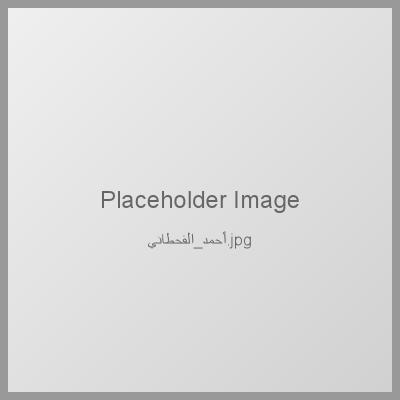
Custom Corporate Wear: Tailoring Uniforms for Saudi Financial Institutions
In the competitive landscape of Saudi Arabia's financial sector, distinctive visual identity has emerged as a crucial differentiator for institutions seeking to establish strong market positioning. While standardized uniform programs offer practical efficiencies, forward-thinking Saudi banks are increasingly recognizing the strategic advantages of custom-tailored uniform solutions that precisely embody their unique brand attributes, organizational culture, and customer experience objectives.
Custom corporate wear represents far more than an aesthetic preference—it functions as a sophisticated business tool that communicates institutional values, enhances employee connection to the organization, and creates memorable visual touchpoints that strengthen customer relationships. For Saudi financial institutions navigating the complex intersection of tradition and innovation, custom-tailored uniforms provide unparalleled opportunities to express distinctive positioning while honoring cultural context.
This comprehensive analysis explores the strategic benefits, development processes, implementation considerations, and return on investment factors associated with custom uniform programs for Saudi financial institutions. By examining both the strategic and practical dimensions of custom corporate wear, we provide Saudi banks with actionable insights for developing uniform programs that serve as powerful assets in their broader institutional success.

Custom banking uniforms incorporate distinctive design elements that express institutional values while maintaining professional presentation standards
The Strategic Importance of Custom Banking Uniforms
Custom uniform programs provide Saudi financial institutions with strategic advantages that extend well beyond basic staff presentation.
Competitive Differentiation
Custom corporate wear creates meaningful market distinction through:
- Proprietary visual language – Distinctive design elements creating immediate institutional recognition
- Brand-aligned color systems – Precise color development reflecting specific organizational identity
- Custom-developed silhouettes – Unique garment structures supporting institutional positioning
- Proprietary detailing – Custom-designed elements communicating institutional values through subtle details
These differentiation elements help Saudi banks establish visual distinctiveness in a sector where institutional offerings often appear similar to customers—providing immediate recognition advantages in competitive environments.
Cultural Integration Excellence
Tailored approaches enable sophisticated cultural expression through:
- Cultural heritage incorporation – Thoughtful integration of traditional Saudi elements through customized design
- Regional sensitivity – Design variations accommodating specific regional cultural expectations
- Modesty-focused innovation – Custom solutions addressing cultural requirements through sophisticated design
- Evolution accommodation – Flexible frameworks addressing Saudi Arabia's dynamic social development
These cultural integration capabilities allow Saudi financial institutions to demonstrate authentic connection to Kingdom values while maintaining sophisticated international banking presentation standards.
Organizational Alignment
Custom uniform programs support internal organizational objectives through:
- Value visualization – Physical manifestation of abstract organizational principles
- Change management support – Tangible expression of institutional transformation initiatives
- Cultural reinforcement – Daily representation of desired organizational behaviors
- Pride development – Enhanced employee connection through distinctive presentation
These alignment benefits explain why many Saudi banks invest in custom uniform programs during periods of significant organizational change—recognizing their power to reinforce transformation messages through daily visual experience.
Expressing Corporate Identity Through Custom Uniform Design
Effective custom banking uniforms translate abstract brand concepts into tangible design elements that consistently communicate institutional identity.
Brand Translation Methodology
Systematic processes for expressing brand through uniform design:
- Brand attribute mapping – Identifying specific design expressions for core institutional values
- Competitive audit integration – Positioning design relative to market landscape
- Visual language alignment – Coordination with broader institutional design systems
- Customer perception testing – Validation of design interpretations through research
These translation approaches create uniforms that function as strategic brand assets rather than mere clothing—consistently communicating institutional positioning through every customer interaction.
Design Element Considerations
Specific design elements carry particular brand significance:
- Color psychology application – Strategic use of color to communicate specific institutional attributes
- Silhouette development – Garment structures reflecting brand character through visual weight and proportion
- Textile selection – Material characteristics communicating quality positioning and institutional values
- Detail treatment – Distinctive finishing approaches reinforcing attention to detail and operational excellence
These design elements function together as a sophisticated communication system, simultaneously addressing aesthetic, functional, and brand representation requirements through careful customization.
Heritage and Innovation Balance
Custom programs enable nuanced positioning through:
- Heritage reference integration – Appropriate incorporation of institutional history through design elements
- Forward-looking signaling – Innovation communication through progressive design approaches
- Islamic banking differentiation – Appropriate design systems for Shariah-compliant institutions
- Vision 2030 alignment – Design elements supporting broader national transformation
This balance allows Saudi financial institutions to demonstrate both respected tradition and innovation leadership—a particularly valuable capability during the Kingdom's economic transformation period.
The Custom Tailoring Process for Financial Institutions
Developing effective custom banking uniforms requires a structured development methodology adapted to financial sector requirements.
Strategic Program Development
Initial planning establishes critical program foundations:
- Institutional vision alignment – Confirmation of executive-level objectives and success criteria
- Stakeholder analysis – Identification of key internal influencers and decision-makers
- Scope determination – Definition of included roles, departments, and operational contexts
- Budget framework development – Establishment of investment parameters and ROI expectations
This strategic foundation prevents costly mid-development redirection while ensuring uniform programs effectively support broader institutional objectives.
Research and Discovery
Comprehensive research underpins effective design development:
- Brand immersion – In-depth exploration of institutional values, positioning, and visual identity systems
- Operational assessment – Analysis of specific banking environments and staff activity requirements
- Employee input collection – Structured feedback gathering from diverse staff perspectives
- Customer journey mapping – Documentation of key interaction points informing design requirements
This discovery process ensures custom uniform designs address both brand representation and practical performance requirements—maximizing investment value through comprehensive requirement understanding.
Design Development
Iterative design processes translate requirements into effective solutions:
- Design concept exploration – Development of multiple creative directions for evaluation
- Material engineering – Identification and testing of appropriate fabric solutions
- Prototype development – Creation of sample garments for evaluation and refinement
- Fit session validation – Real-world testing on representative staff members
This development methodology balances creative exploration with practical validation—ensuring custom uniforms excel in both brand representation and everyday performance.
Implementation Success Strategies
Effective execution transforms custom uniform designs into successful operational programs.
Change Management Approaches
Strategic communication supports successful adoption:
- Executive sponsorship activation – Leadership engagement demonstrating institutional commitment
- Employee communication campaigns – Strategic messaging explaining program benefits and objectives
- Implementation ambassador development – Cross-departmental representatives supporting transition
- Expectation management – Transparent timeline and process communication
These change management strategies overcome natural resistance to uniform changes while building positive anticipation among Saudi banking staff.
Sizing and Distribution Systems
Practical implementation factors ensuring smooth transition:
- Advanced sizing methodologies – Precise measurement protocols preventing fit issues
- Distribution infrastructure development – Efficient systems for uniform allocation
- Inventory management establishment – Ongoing programs maintaining appropriate stock levels
- Replacement protocols – Clear processes for addressing normal wear requirements
These practical systems prevent implementation disruption while ensuring consistent presentation across extensive Saudi banking networks.
Training and Guidelines
Documentation and education supporting proper utilization:
- Style guide development – Clear documentation of proper wearing standards
- Branch management training – Leadership preparation for supporting implementation
- Visual merchandising guidelines – Presentation standards for optimal impression
- Care instruction development – Maintenance guidance ensuring sustained appearance quality
These educational elements ensure custom uniforms maintain their intended presentation throughout daily use—protecting the institution's uniform investment.
Return on Investment Considerations
Custom uniform programs represent significant investments requiring comprehensive value assessment.
Financial Evaluation Framework
Structured approaches for assessing monetary return:
- Investment quantification – Comprehensive accounting of all program development and implementation costs
- Lifecycle cost analysis – Total ownership cost calculation including maintenance and replacement
- Competitive positioning value – Assessment of market differentiation benefits
- Brand asset valuation – Integration with broader brand value metrics
These financial approaches provide Saudi financial institutions with defensible ROI assessments that support appropriate uniform investment decisions aligned with business objectives.
Employee Impact Assessment
Evaluation of staff experience improvements:
- Satisfaction measurement – Comparative assessment of employee experience with custom uniforms
- Pride and identification metrics – Evaluation of organizational connection improvements
- Recruitment and retention impact – Analysis of attraction and longevity effects
- Productivity considerations – Assessment of performance impact through improved functionality
These employee factors represent significant value dimensions for Saudi banks, where talent competition continues to intensify in the expanding financial sector.
Conclusion: Strategic Advantage Through Custom Expression
For Saudi Arabia's forward-thinking financial institutions, custom uniform programs represent powerful opportunities to translate brand positioning into tangible daily experience. By developing distinctive corporate wear that precisely embodies institutional values, Saudi banks can create immediate visual differentiation in an increasingly competitive market while simultaneously enhancing employee connection and customer perception.
The development of truly effective custom banking uniforms requires far more than aesthetic consideration—it demands systematic integration of brand strategy, operational requirements, cultural context, and implementation rigor. When approached with appropriate strategic vision and execution discipline, custom corporate wear programs deliver multidimensional value that justifies their investment through both improved institutional positioning and operational benefits.
As Saudi Arabia's financial sector continues its sophisticated evolution under Vision 2030, the institutions that most effectively leverage all available brand expression opportunities—including the powerful daily impact of distinctive custom uniforms—will enjoy sustained advantages in customer recognition, trust development, and market differentiation. In this environment, thoughtfully customized uniform programs represent not mere operational details but strategic assets contributing to broad institutional success.
